You know the i30 is good, because you've had one, or your sister/mum/brother/friend did. That's just it – the car has become a part of the Aussie car landscape, like its rivals, the Corolla and Mazda3. And car journos have been banging on about how great the i30 is since it arrived in 2007. It was all true, by the way.
When the new generation car landed earlier this year we were concerned that while the package might be good, the price may not be – but we needn't have worried.
Now we're taking a closer look, in this case, at the entry-level i30 Active.
As a fan of the previous i30 I wanted to see how Hyundai could possibly improve on what was an excellent car for the money. I mean if it ain't broke, don't try to then make it broken... or something, right?
Hyundai I30 2017: Active
| Engine Type | Inline 4, 2.0L |
|---|---|
| Fuel Type | Unleaded Petrol |
| Fuel Efficiency | 7.4L/100km (combined) |
| Seating | 5 |
| Price From | $13,420 - $17,600 |
| Safety Rating |
|
Is there anything interesting about its design?
9 / 10
This new generation i30 arrived in April 2017 looking like a hatch Audi could (and probably should) have built, with that low, wide grille and its cleaner, sharper design. The tail-lights look more serious and restrained and more than a little Golf-like, while the side profile is sleek with less curvaceous wheel arches. It's a more grown-up looking car than the previous model, and looks ready to size up the Golf.
.jpg)
That interior is verging into Golf territory, too, with a high quality fit and finish. There are soft-touch window sills in the front and back (normally it's hard plastic for the rear passengers), that enormous touchscreen looks great, as do the seats, the door trims and the door frames look well-crafted and smooth, even the thick carpet over the boot floor has a premium feel.
The new i30's dimensions have changed, and at 4340mm end-to-end it's 40mm longer than the one before it, 15mm wider at 1795mm across, and 15mm shorter in height at 1470mm tall.
All i30s are hatchbacks, which means unlike the Corolla or Mazda3, you can't get a sedan version. The closest thing to an i30 sedan is a Hyundai Elantra.
How practical is the space inside?
7 / 10
The i30 is a small car, but sitting in the rear I can still (just) fit behind my (191cm suitable) driving position, and the headroom in the back is excellent.
.jpg)
Getting in and out of the back is made easier, too, by large, wide-opening rear doors.
The new i30 has a larger cargo capacity than the old one with a 395-litre boot, and that's bigger than the Mazda3's and Corolla's.
Storage throughout the cabin is excellent.
Storage throughout the cabin is excellent with four cupholders (two in the front, two in the back), bottle holders in the doors, a large centre bin and another deep stowaway area in front of the shifter.

Does it represent good value for the price? What features does it come with?
9 / 10
If you've had a peek at the i30 line-up, with its five different variants, and thought it all looks a bit confusing, you're right, it's a shemozzle. Our range review over here will decode it for you, but the important thing to know for now is that the Active grade is the entry-point and most affordable of the i30s, with the automatic listing for $23,250 (the manual is $20,950).
The Active costs the least, but the hefty standard features list means you're getting seriously good value for money.
The Active costs the least, but the hefty standard features list means you're getting seriously good value for money. There's an 8.0-inch screen with sat nav and reversing camera, plus Apple CarPlay and Android Auto, Bluetooth connectivity, rear parking sensors and wireless phone charging.
The Active now gets alloy wheels (16-inch). They look cool and are a big step up from the plastic hubcaps over steel rims on the entry spec in the previous generation.
.jpg)
The $23,250 Toyota Corolla Ascent Sport and the $24,890 Mazda3 Maxx both have 7.0-inch screens, but only the Mazda has standard sat nav. The more premium and pricey $26,490 Volkswagen Golf has an 8.0-inch screen but not sat nav as standard. That makes the i30 unique and great value.
What are the key stats for the engine and transmission?
7 / 10
The Active has a 120kW/203Nm 2.0-litre four cylinder petrol engine (there's no diesel engine available in this grade).
It's a strong engine and I prefer its linear nature to the more powerful, but relatively manic, 1.6-litre turbo four in the higher, sporty grades.
.jpg)
The conventional six-speed auto is also a smoother alternative to the dual-clutch auto in those pricier grades.
How much fuel does it consume?
7 / 10
The i30 Active's engine is happy to run on 91RON with Hyundai's official combined cycle fuel consumption figure being 7.4L/100km.
We scored a higher 12.4L/100km, according to our trip computer, but that's mainly urban driving, of the worst sort – mostly hills and traffic jams. Throw in more highways and country roads and you'll see better mileage.
What's it like to drive?
7 / 10
The expectations were high. The last generation i30 impressed my socks straight off with its comfortable, Australian-tuned ride and good handling. How could Hyundai better that?
The good news is, it is better – but rather than a leap forward to match the refined looks, the ride and handling seem to have taken a short hop. If the i30 is hunting the Golf it will need to match the German, not just in the style stakes, but ride and handling, too.
.jpg)
The ride does feel a little less comfy with this suspension and tyre (Kumho 205/55x16 front and rear) combination, although road feedback and grip is good. Steering is excellent – accurate and natural.
Forward visibility is great thanks to clever A-pillars that curve out of the way, and while the reversing camera's picture is shocking at night, it's fine during the day, and Hyundai has done a good job to eliminate blind spots.
The mid-sized Tucson SUV we've been driving stops much quicker, despite being 300kg heavier.
Brakes while fine, could be better – I found myself pushing harder on that left pedal than I'd want to. The i30 wears 280mm x 23mm discs on the front and 262mm x 10mm on the back.
The mid-sized Tucson SUV we've been driving on long-term test for the past six months stops much quicker with its larger 305 x 25mm front and 302 x 10mm rear brakes, despite being 300kg heavier.
.jpg)
The higher, sporty i30 grades have slightly larger front brakes.
Another shortcoming for this entry i30 is shared by the Tucson – weak headlights. While the higher grades have the awesomely bright LED headlights, the base spec i30 Active has projector beams which cast a yellowish, dim 'glow' – high beam doesn't cut it on dark Australian roads.
Warranty & Safety Rating
What safety equipment is fitted? What safety rating?
7 / 10
The i30 has been given the maximum five-star ANCAP rating. There are seven airbags, a full-sized spare wheel, traction and stability control and hill start assist. What this grade doesn't get is the advanced safety equipment the others have – things like AEB, blind spot warning and rear cross traffic.
Hyundai says these features will be available as part of an optional pack by the end of this year.
What does it cost to own? What warranty is offered?
8 / 10
The i30 is covered by Hyundai's five-year/unlimited kilometre warranty.
Servicing is recommended every 12 months/15,000km, and you can expect to pay $259 each year for the first three years, then $359 for the fourth, and back to $259 for the fifth service.
Verdict
The i30 Active is not just excellent value-for-money, this car feels well-crafted inside and out. The ride and handling is good, and it's easy and fun to drive, while staying practical with that bigger boot and good cabin space.
Would you choose an i30 Active over a Corolla or Mazda3? What about a Golf? Tell us what you think in the comments below.
Pricing Guides
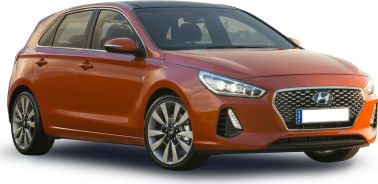
Range and Specs
| Vehicle | Specs | Price* |
|---|---|---|
| Active | 1.6L, Diesel, 6 SPEED MANUAL | $12,540 - $16,720 |
| Active 1.6 Crdi | 1.6L, Diesel, 6 SPEED MANUAL | $12,210 - $16,280 |
| Active X | 1.6L, Diesel, 6 SPEED MANUAL | $13,750 - $18,040 |
.jpg)
.jpg)
.jpg)
.jpg)






















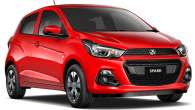
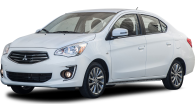






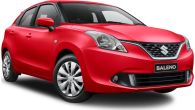





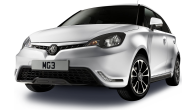


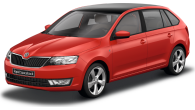

.jpg)


.jpg)

